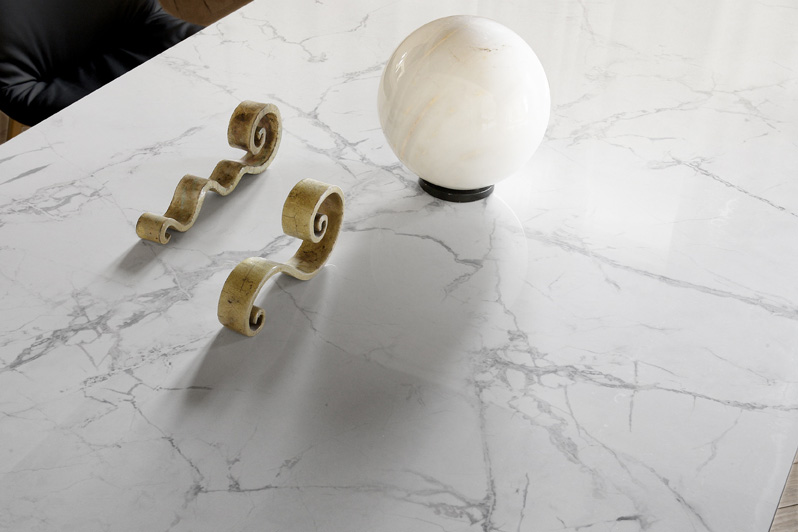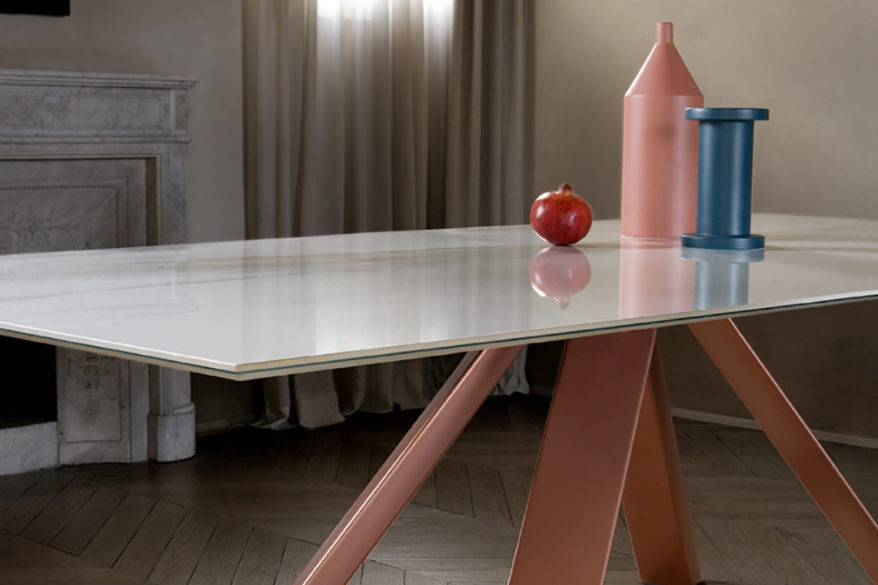Once we selected the shape and the size of the table we want at home, the next step is usually the choice of the material for the top.
Regarding materials there are many possibilities, but each one has its own characteristics in terms of strength, appearance, ease of maintenance.
Here is a roundup of the most used materials and how to decide the most suitable for your needs.
WOOD

Wood is a living material. This makes it the perfect choice for those who love natural materials.
For example, it is sensitive to light and it gets to its final shade over time. In terms of maintenance wood needs some attention as it fears moisture and absorbs oily and greasy substances. Even so it is very versatile: each essence has its characteristic color and veins which adapts both to classic and contemporary environments.
GLASS

It is surely one of the most used materials in many areas, from furniture to residential construction, to the production of decorative and art objects.
It is fragile by its nature but it acquires resistance when subjected to certain treatments such as tempering. Tempered glass is usually used in furniture for its strength and for safety since it breaks into tiny, non-cutting fragments. The transparent version is perfect to lighten a room or to highlight a table base. In addition the market offers a lot of different colors of glass matching any type of environment. It is an eternal and totally recyclable material.
CERAMIC

It is a composite material whose use has an ancient history. It can be crafted in different ways to realize products for the most versatile uses. Ceramic is not very demanding for maintenance and very resistant to stains, high temperatures, humidity and frost, unalterable to light, hygienic and easy to clean. Moreover it is suitable for different treatments and its finishes can simulate the aesthetics of natural stones with excellent results.
MARBLE

It is a natural and very precious material as wood. Marble veins depend on the impurities of the original rock. Therefore each block and each cut will have different veins and characteristics. The surface can be worked in many different ways achieving a glossy or smooth finish. It is a durable material even if due to its porosity characteristics it can absorb greasy and oily substances. For that reason it requires a little attention in daily use. Its precious appearance makes it perfect for important and representative environments.

